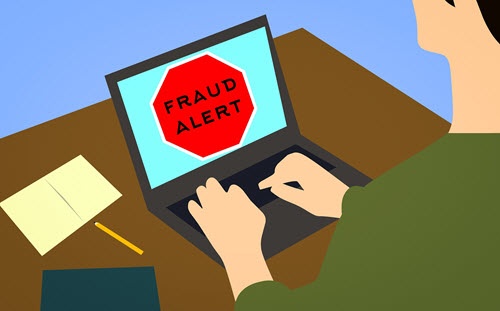The CMO of a Fortune 500 company offered the CRO the following options regarding spending $100,000 on a marketing campaign. He was willing to provide the sales team one of six choices:
- 200,000 targeted contacts (name and title) in the right vertical (no email addresses)
- 100,000 companies with up to three executive contacts in the right companies (no email addresses)
- 20,000 companies with multiple contacts and verified technical environment information in the right verticals (no email addresses)
- 4,319 contacts who downloaded a white paper but may or may not be in targeted companies or have any need or authority to buy (email addresses, many bogus, no company firmographics and no telephone numbers)
- 117 appointments with people in the right companies but may or may not have any need or authority to buy
- 81 highly qualified sales opportunities with the right contact who has a need backed by some form of compelling event
The CMO came up with these options because he was fed up. No matter what he did, no matter how he spent the company’s money, the CRO would complain about lead quality (and quantity). Marketing was convinced that sales never effectively followed-up on any leads. I know. You have heard it all before.
(To find out which alternative the CRO picked, you’ll have to read to the end of the blog.)
What is a Lead?
This blog about lead cost summarizes a lot of research I have done on the subject. There is a table in that blog that recaps the cost-per-lead based on lead source.
It is interesting to note that one of sources (content aggregation) has a $23.15 cost-per-lead—which at first glance sounds like a great deal for a B2B lead. What is misleading about this is that cost-per-lead assumes that all leads are equal in quality. In this case only 3% of the total were qualified (and only about 12% were worthy of nurture)—meaning the leads that were worthwhile actually cost more than $2,500 each because so few of the total were qualified. And that doesn’t even count the expense needed to discern which are worthwhile (a minority) and which weren’t (the vast majority).
Before answering the question “What is a Lead” I will cover what I don’t think is a lead:
- A BANT qualified (or ANUM or any other formula) target: I still hear marketing and sales people talking about wanting BANT (budget, authority, need, timeframe) qualified leads. The problem with BANT qualification criteria is that once a prospect has a specific budget and timeframe it is highly likely that they have already selected a preferred vendor and the best you can hope for is to be column fodder in an evaluation that has already been won by a more agile competitor.
- An Appointment: Many sales reps will say “just get me in front of the right person and I can sell them.” The problem is that to an appointment setter everything looks like an appointment (just like to a hammer everything looks like a nail). When the goal is an appointment, vs. qualification with the right target, appointments end up being a disappointing waste of time for the sales rep. Read more in this white paper.
- Hand Raisers: We’ve found that the lead rate is inversely proportional to the number of times an individual has consumed your content. So, if someone consumes six or more pieces of content (whitepaper download, webinar sign-up, blog subscribe, etc.), it’s likely they have no authority to make decisions. Yet, these are the “prospects” who score a lot of points in a marketing automation solution.
Pain, Priority, Process, Environment
So, we’ve talked about what isn’t a lead, now let’s delve in to what is. Understanding the level of pain, which I also call condition of need, is key. Determining the level of priority that need has within the organization is also essential. Uncovering the decision process is necessary before you can say this target’s a lead. And, answering questions about the environment and whether it’s conducive to your solution is also required before that CRM entry can be deemed a lead.
Pain: There are three levels of pain (or need) that drive someone to purchase something (whether for themselves personally or on behalf of a company). I call these conditions of need:
Fear of loss in the current situation
Perceived risk of deterioration in the current situation
Opportunity to improve the current situation
Compliance laws are a good example of how a fear of loss condition of need is reached: If you don’t comply with this regulation or that guideline, you will be fined and lose money. Unfortunately (or maybe fortunately) this condition represents a small percentage of the situations that motivate a buyer to buy.
A majority of the time a perceived risk motivates a buyer to act. A good example is a buyer worrying about their customers’ experience in dealing with their company. The emotion you find in this condition is that things are OK now, but they could get worse in the future, or our competitors could do something first, etc. I will add that while this condition of need is most prevalent, it is also the one that results in a “no decision” outcome.
I call selling into an opportunity to improve situation selling into a rainbow. Only the most self-actualized (Maslow’s Hierarchy of Needs) individual is going to buy for this reason. An example is a company with a high net promoter score (NPS). If the company’s customer experience scores are high, then it may be nice to have it inch up another 1/10 of a point, but it’s probably not going to be a priority at the board level. There are just too many real problems that require your time—and that precludes spending time on something that is a luxury in the business world.
It is important to recognize which condition of need you are selling into. Fear is a powerful motivator. The prospect is going to do something—but these situations are few and far between. Risk is less motivating than fear, but more powerful than the opportunity to improve situation. Deciding whether to spend time with each prospect depends on your analysis of the degree to which risk is going to motivate a decision. You can’t decide to pursue an opportunity based solely on the condition of need. However, it is important to first evaluate that the condition of need is sufficient to invest your time.
Priority is the second thing to evaluate when determining if a suspect is a prospect or lead. This is where you access the following on behalf of the prospect: Why change? Why now? Why us? Every one of us in sales has been guilty of “pushing rope.” When that happens, we did not ask the prospect (and ultimately ourselves on their behalf) the “Why” questions.
Process questions replace the budget and timeframe questions in the BANT criteria. Questions such as “in addition to yourself, who else will be involved in the decision and what roles will they play” and “what criteria or measurement will be used to justify a decision” will help you determine if there is a concerted effort to handle a pain or need, or if the individual you are talking to has good intentions but no authority to act.
Environment questions help answer the following: Should we compete? Can we win? Do we want to win? For each opportunity there is an environment that signals the potential to compete and other environments that say stay away. The environment can be technical, political, financial and encompass many other factors. For example, if you provide an outsourced solution, and the prospect is dead set against outsourcing, then regardless of the other qualifying criteria you are probably better off going to the next prospect, or at least get them over this objection before trying to sell to them. The key is to understand high potential environments as well as deprioritizing low potential environments.
The Verdict
So, which option did the CRO select?
She selected Option #3. Subsequently, 20,000 companies with multiple contacts and verified technical environment information in the right verticals (no email addresses) were distributed via CRM to sales. Perhaps the happy medium appealed to the CRO—a good quantity, but with some qualification.
Guess what happened? These “leads” ended up in a black hole—with $100,000 wasted. The same reps who did not effectively follow-up on 81 high quality sales opportunities that were previously provided by marketing were, predictably, highly unlikely to call on 20,000 suspects.
The only way to stop the finger pointing: “Marketing sends us bad leads/Sales never follows up on the leads we send them” is to instill accountability.
If every CMO was accountable for sending only qualified leads to sales, without expecting sales reps to sift through to find the 1%, or 10% or xx% that were worthwhile, things would start to change.
And if every CRO was accountable for insuring the sales force followed up on every lead delivered, there’d be a lot less money wasted, and a lot more business closed.
Share your experiences on the topic, please.
Topics: Lead Generation, Definition of a Lead, Appointment, Sales Lead Management, Lead Close Rate





